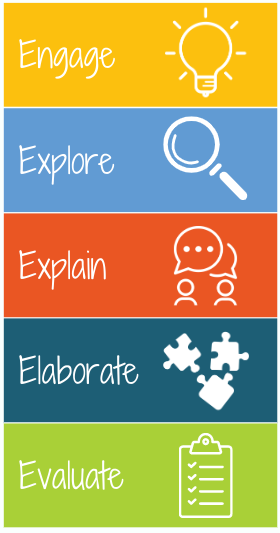How do teachers’ relationships with their colleagues impact their energy levels or exhaustion? How can a teacher build strong relationships with their colleagues to make this work more enjoyable and rewarding?
My research on teacher engagement in blended learning environments revealed that teachers’ relationships with their colleagues directly impact their engagement at work and level of job satisfaction. Participants in my study felt the time they spent with colleagues designing learning experiences, sharing best practices, troubleshooting issues, and accessing support made them stronger teachers and lowered their overall stress levels. Even though teachers work in close physical proximity to one another, that does not mean they have time to connect in the hustle and bustle of a typical school day. This is problematic.
If we want teachers to be the “lead learner” in the classroom, experimenting with new teaching strategies or instructional models, they need to feel safe taking risks and potentially failing. This is more likely to happen if they feel connected to a supportive learning community on their campus where they can seek support, observe other classes, engage in conversations with colleagues, and collaborate with other teachers in their subject area to design learning experiences.
So, how do leaders create more opportunities for teachers to connect during the school day? How can leaders help teachers develop stronger relationships and learn with their colleagues?
#1 Coffee with Colleagues
Why: The goal is to help staff members get to know one another and engage in conversations they usually would not have time for during the school day.
How: Dedicate the first or last 15-30 minutes of a staff meeting to conversation and connection. I worked with a school that provided coffee and muffins at the start of one staff meeting each month. The paper coffee cups had questions written on them. These conversation starters helped teachers break the ice.
#2 Snaps Jar in the Staff Room
Why: The goal is to create a culture of appreciation on your campus. Routines like this go a long way in making teachers feel seen and supported!
How: Place a large glass jar in the staff room with a stack of cards (e.g., colorful index cards). Encourage teachers to write each other notes of appreciation and recognition. Teachers can thank each other for help with a lesson, navigating a new technology tool or curriculum, or being kind on a tough day. Then at the end of each month, a student working as an office assistant can distribute the notes into the teachers’ mailboxes.
#3 Wednesday Walks
Why: The goal is to get teachers out of their classrooms to observe another teacher in action and provide them with substantive feedback.
How: The administration can encourage teachers to spend 15-20 minutes on their preparation period one day a week getting into another classroom to watch part of a lesson. Giving up part of their preparation period can feel like a big ask when teachers are swamped, so leaders should consider ending staff meetings 15-20 minutes earlier to compensate.
It is also an opportunity for teachers to get feedback on their lessons. They can post a short link or QR code on their door that takes visitors to an online feedback form. That way, they can get feedback on something they are trying. This routine helps break down the metaphorical walls on campus and helps teachers learn with and from one another during their school day.
The benefit of having teachers go on a walk and visit another classroom is that they are likely to get inspired by seeing how other teachers approach this work. They may see a new strategy, instructional model, or technology tool in practice that sparks an idea for them.
#4 Host an Unconference
Why: The goal is to leverage the talent on your campus, allow teachers to provide informal professional learning for their colleagues, and develop a dynamic learning community.
How: Instead of hiring outside talent to lead your next professional development day, host an unconference where teachers generate ideas for sessions on post-it notes displayed on a wall, vote on the topics they are interested in attending by putting a dot on those session descriptions, and allow the folks who pitched the most popular session topics to host informal trainings in their classrooms.
Not only do teachers enjoy the agency to attend sessions that interest them or address a particular need they have, but they also position teachers to become ongoing resources for one another. If a teacher attends a session on a particular strategy or technology tool, they know which colleague they can turn to for support as they implement.
#5 PLCs and the 5Es Instructional Model
Why: The goal is to provide professional learning communities (PLCs) with a clear structure to guide their work together to ensure it is positive and productive.
How: PLCs use the 5Es instructional model to structure their time together, giving them the agency to identify a pedagogical problem they want to focus on for an in-depth inquiry cycle. The 5Es move teachers through the engage, explore, explain, elaborate, and evaluate stages of the inquiry cycle, making their time together more substantive and productive. To read more about using the 5Es instructional model to support PLCs, check out this blog post.
Teachers benefit from opportunities to connect and learn with and from each other. Just as it is easy to neglect community building and maintenance in a classroom because of time constraints and competing priorities, the same is true for a school campus. Leaders are spread thin and, like teachers, feel the pinch of too much to do and too little time. However, the time school leaders invest in helping to develop a strong learning community on campus characterized by teachers who feel connected to and supported by one another pays dividends in terms of teacher engagement and job satisfaction.
The Complete Guide to Blended Learning is now available for pre-order on Amazon!
School leaders interested in supporting their teachers in learning how to design and facilitate blended learning experiences to work with individuals or small groups of students can request a quote for bulk licenses of my self-paced online courses, Getting Started with Blended and Online Learning and Advancing with Blended and Online Learning! Teachers with access to my online courses enjoy video instruction, lesson planning templates, and resources designed to support them as they shift to blended learning.









2 Responses
I absolutely love this idea! I think teachers should definitely build relationships with their colleagues. I would agree the more time they spent with colleagues designing learning experiences, sharing best practices, troubleshooting ideas and accessing support would make them stronger teachers. The idea of coffee with colleagues and writing questions on them is such a fun way to break the ice and start conversations between teachers, that usually don’t talk to one another in passing. The school I work at has something similar to the snaps jar it’s a postcard that starts with I appreciate and a few lines to write something we appreciate about one another, whether it’s admin, teachers or even custodial. It’s a nice way to show our gratitude for one another. The benefits are endless to being social with your colleagues not only to teachers but to students as well.
I love “Coffee with Colleagues.” We seldom have the time to connect with each other on a personal level. Relationships with our co-workers is equally important as those with our students.